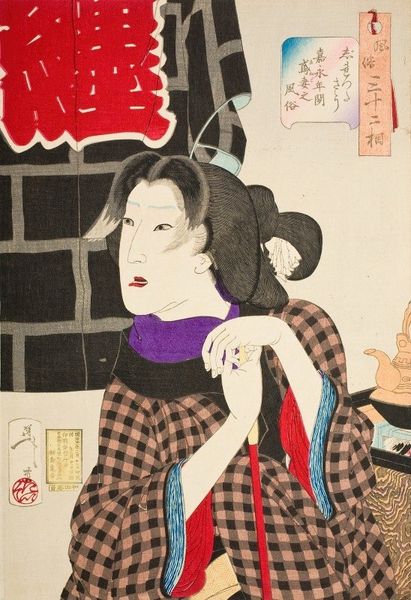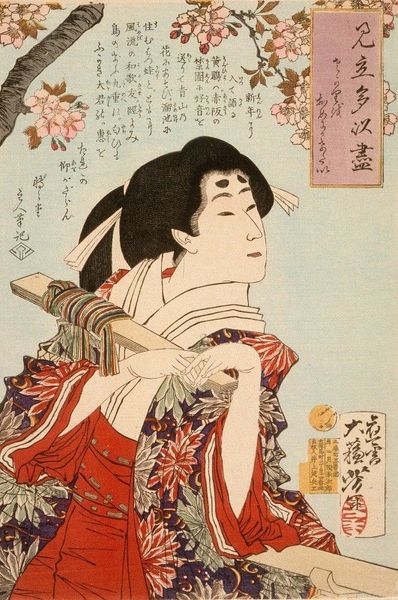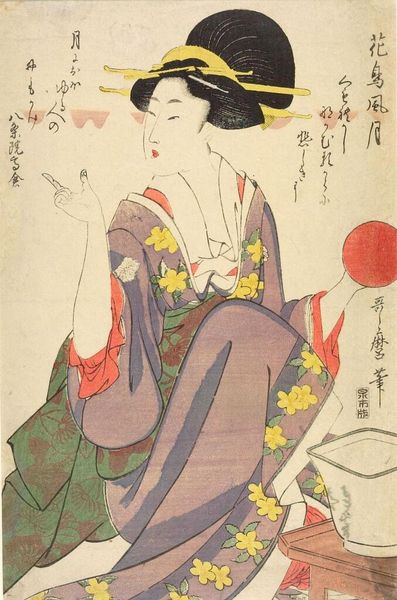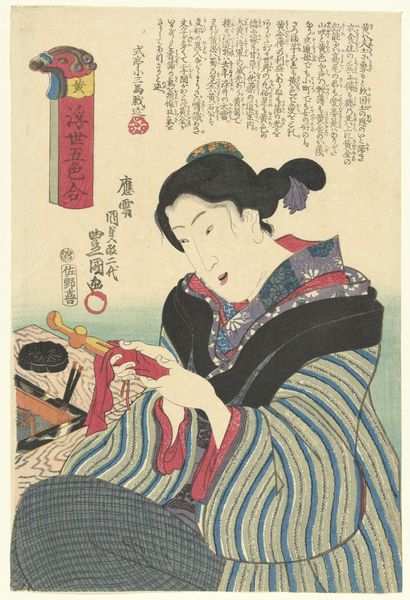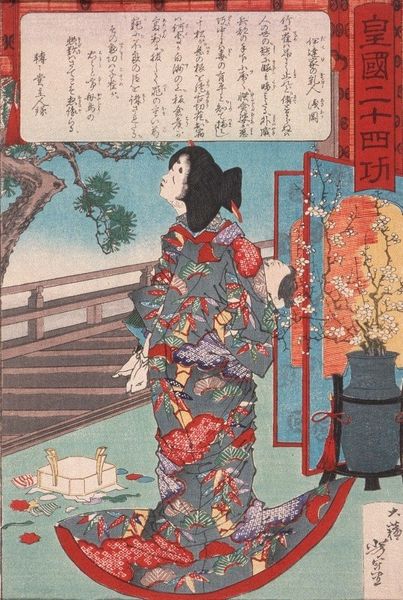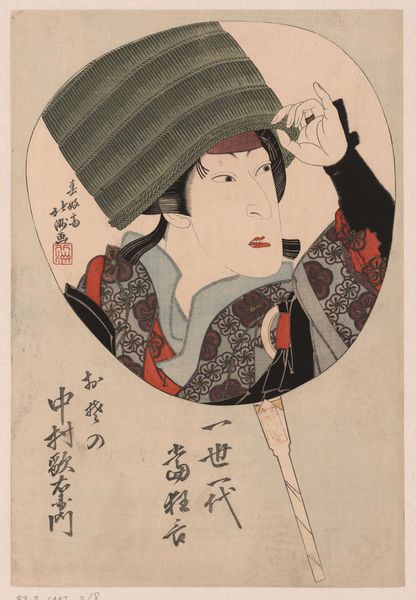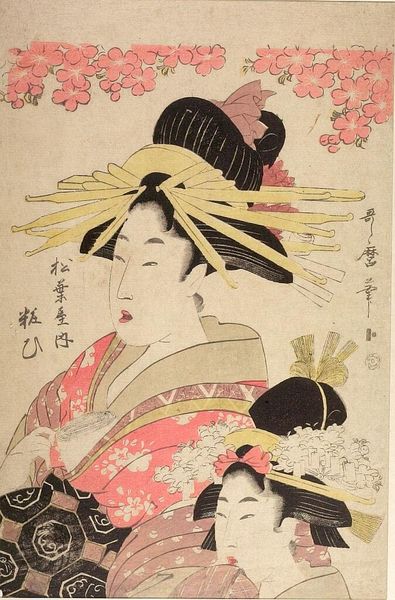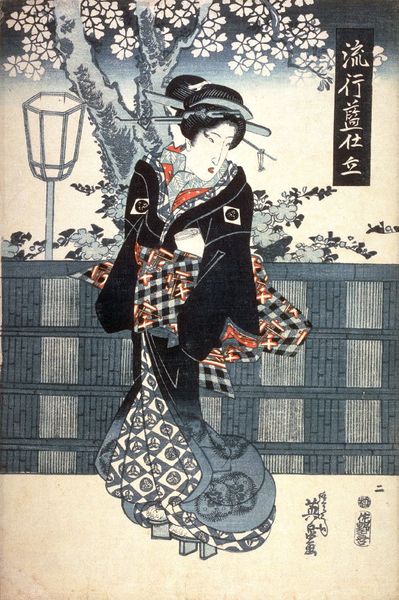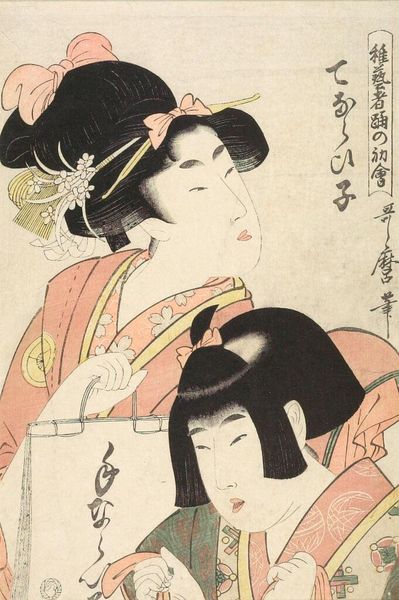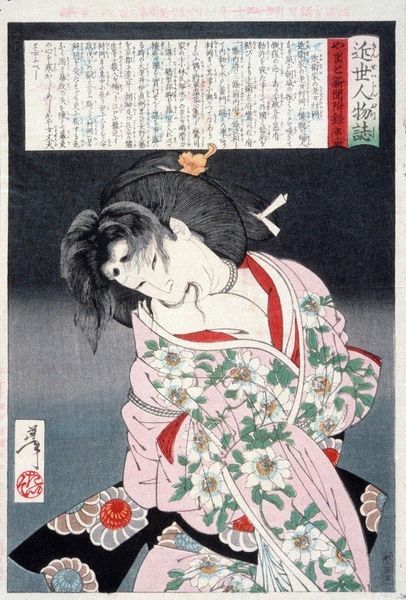
Copyright: Public Domain: Artvee
Curator: Tsukioka Yoshitoshi, a leading master of the ukiyo-e style, created this woodblock print in 1888. It's called "Expectant; The Wife of a Fireman in the Kaei Period." Editor: There's a melancholy stillness about it. The muted tones and the subject's gaze directed off frame make it rather haunting, I think. I'm particularly drawn to how Yoshitoshi employs flat planes of color to define the space. Curator: This is part of a series titled "Thirty-two Aspects of Customs and Manners" depicting women from different social classes in various situations, during the Kaei era of 1848-1854 and then projecting forward to the Meiji period of 1868-1912 in which the artist was working. Here, we see her waiting for news, highlighting the anxieties faced by women whose husbands faced danger daily. It's as much a social commentary as it is a genre painting. Editor: The composition definitely supports that reading. The repeated squares—the window, her kimono—seem to visually confine her, mirroring the limits on her agency and also perhaps foretelling of dangers closing in, with only that pop of red near her sleeves standing out to indicate hope. Curator: Absolutely. And the choice of portraying her in such a contemplative state really speaks to the realities for women in the era, their contributions to family, their hopes and fears when the lives of the men are on the line, their bravery is unsung. Editor: I noticed also the contrast between the highly patterned kimono and the very blank face. It almost neutralizes any attempt to discern true emotion in the woman’s expression. Very cleverly executed. The focus is less on her individual feelings, more on the universality of expectation, I think. Curator: A really compelling and important aspect. By focusing on broader, shared anxieties, he created a powerful portrait of a social reality, and how those pressures were handled inside the families and homes of those that served. Editor: Seeing it this way truly gives the print such incredible resonance.
Comments
No comments
Be the first to comment and join the conversation on the ultimate creative platform.

